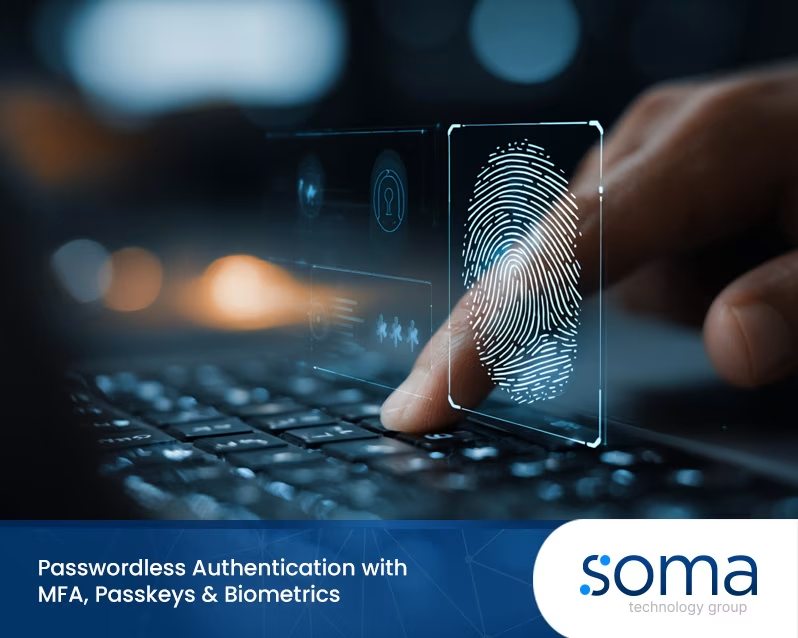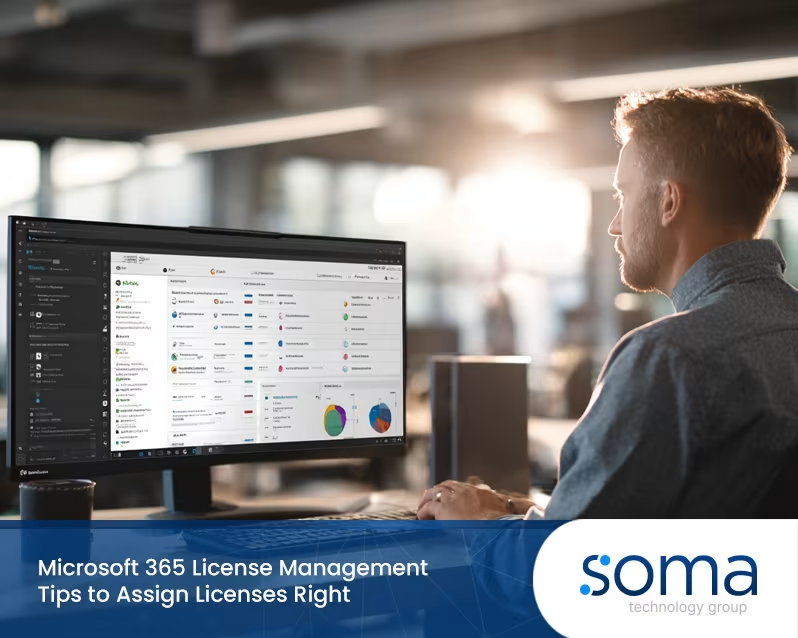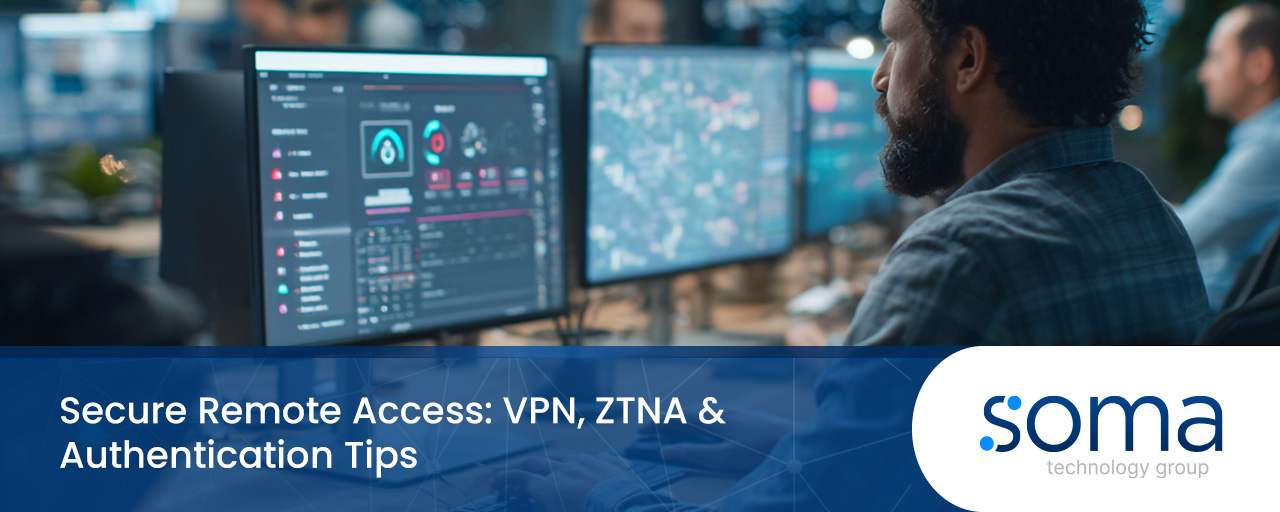
Secure Remote Access: VPN, ZTNA & Authentication Tips
Remote work is now a standard part of business life, but it brings new security risks. As more employees access company systems from home or mobile devices, protecting that access becomes critical. This blog explains how secure remote access works, why traditional VPNs aren’t enough anymore, and what modern solutions like Zero Trust Network Access (ZTNA) offer. We’ll also cover key strategies, tools, and best practices to help your business stay protected while enabling access from anywhere.
What is secure remote access and why it matters
Secure remote access allows employees to connect to your corporate network from outside the office without exposing sensitive data. It’s more than just logging in—it’s about protecting every connection and device involved. With more businesses adopting remote and hybrid work models, the need for strong access controls has never been higher.
Traditional methods like VPNs are still common, but they often lack the visibility and real-time threat detection needed today. A secure remote access solution should include features like multi-factor authentication, endpoint protection, and access management policies that adapt to changing risk levels.

Key strategies to improve secure remote access
To truly protect your systems, you need more than just a login screen. Here are several strategies that can help you strengthen your remote access setup.
Strategy #1: Move beyond VPN-only setups
VPNs are useful, but they’re no longer enough on their own. Once a user is inside the network, traditional VPNs don’t restrict what they can access. This increases the attack surface. Consider combining VPNs with ZTNA or other layered security tools.
Strategy #2: Use multi-factor authentication (MFA)
MFA requires users to verify their identity in more than one way—like entering a password and confirming a code sent to their phone. This simple step blocks many common attacks and adds a strong layer of protection.
Strategy #3: Apply least privilege access controls
Not every employee needs access to every system. Limit access based on roles and responsibilities. This reduces the risk of internal threats and limits damage if credentials are compromised.
Strategy #4: Monitor endpoints continuously
Laptops, phones, and tablets used for remote work can be vulnerable. Use endpoint detection tools to monitor these devices for unusual activity and enforce security policies like encryption and automatic updates.
Strategy #5: Implement Zero Trust Network Access (ZTNA)
ZTNA assumes no user or device is trusted by default. It verifies every request and limits access to only what’s needed. This model is ideal for securing remote access in modern environments.
Strategy #6: Use single sign-on (SSO) where possible
SSO allows users to log in once and access multiple systems securely. It reduces password fatigue and improves user experience while maintaining strong authentication controls.
Strategy #7: Review and update security policies regularly
Technology and threats change fast. Make sure your remote access policies are up to date and reflect current risks, compliance needs, and business operations.
Essential features of a secure remote access solution
A strong solution should include these key features:
- Multi-factor authentication to confirm user identity
- Role-based access controls to limit unnecessary access
- Endpoint protection to secure devices used off-site
- Real-time monitoring for suspicious activity
- Integration with existing systems like SSO or identity providers
- Support for mobile device access without compromising security
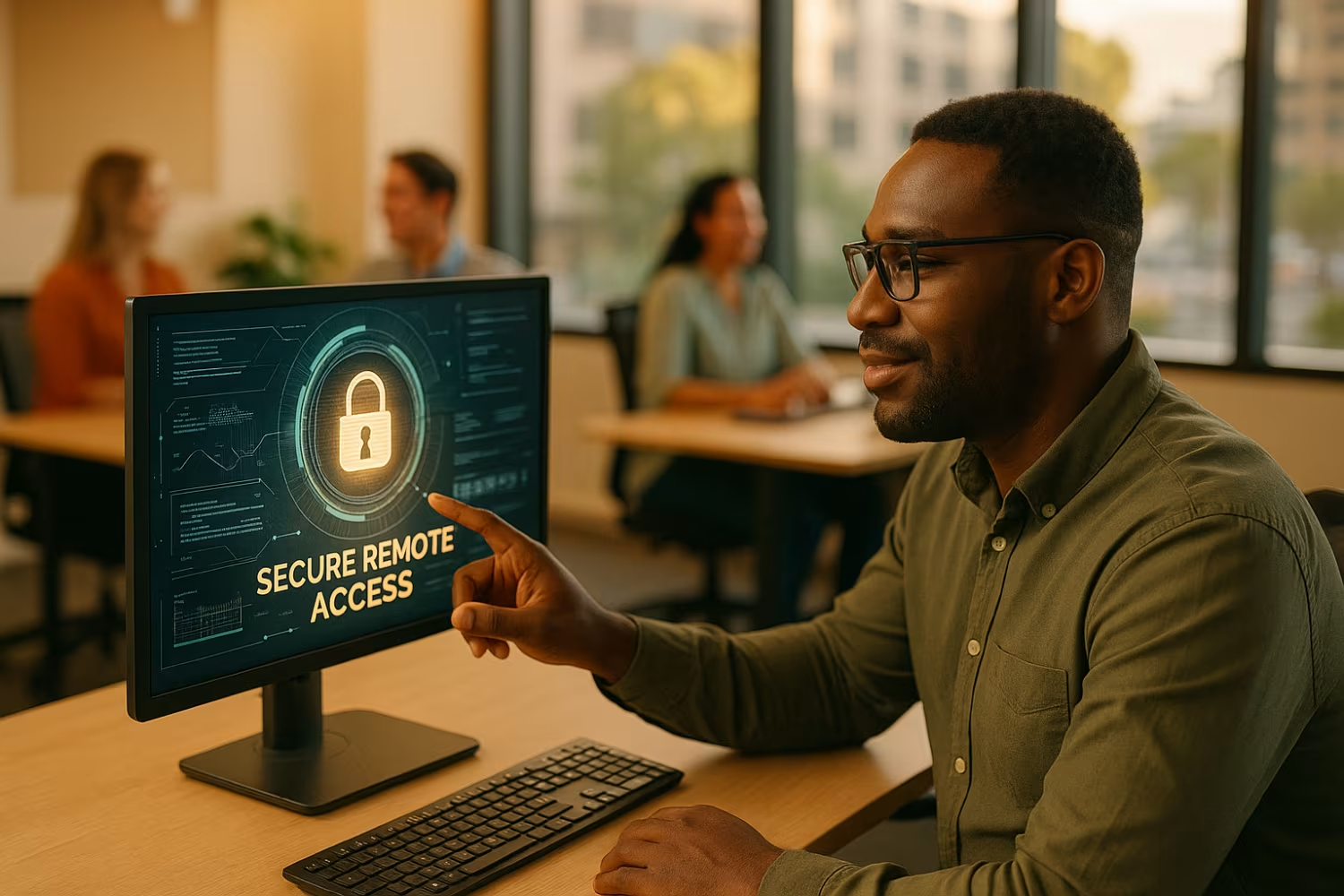
Why zero trust network access is replacing traditional VPNs
Zero Trust Network Access (ZTNA) is gaining popularity because it addresses the weaknesses of traditional VPNs. Instead of giving users broad access to the network, ZTNA verifies each request and only grants access to specific applications or data.
This approach reduces the risk of lateral movement by attackers who gain access through a compromised account. It also improves visibility into who is accessing what, when, and from where. For businesses with remote or hybrid teams, ZTNA provides a more secure and flexible way to manage access.
Tools that support secure remote access
Choosing the right tools can make or break your remote access strategy. Here are some options to consider:
Tool #1: Identity and access management (IAM) platforms
IAM platforms help you manage user identities, enforce policies, and integrate with SSO and MFA tools. They centralise control and reduce the risk of unauthorised access.
Tool #2: Endpoint detection and response (EDR) systems
EDR tools monitor devices for threats and respond automatically to suspicious activity. They’re essential for protecting laptops and mobile devices used outside the office.
Tool #3: Cloud-based secure access gateways
These gateways act as a middle layer between users and your systems. They inspect traffic, enforce policies, and block risky behaviour in real time.
Tool #4: Virtual private networks with enhanced controls
Modern VPNs offer more than just encrypted tunnels. Look for ones that include split tunnelling, device checks, and integration with other security tools.
Tool #5: Security information and event management (SIEM)
SIEM platforms collect and analyse data from across your network. They help detect threats early and provide insights into access patterns and potential risks.
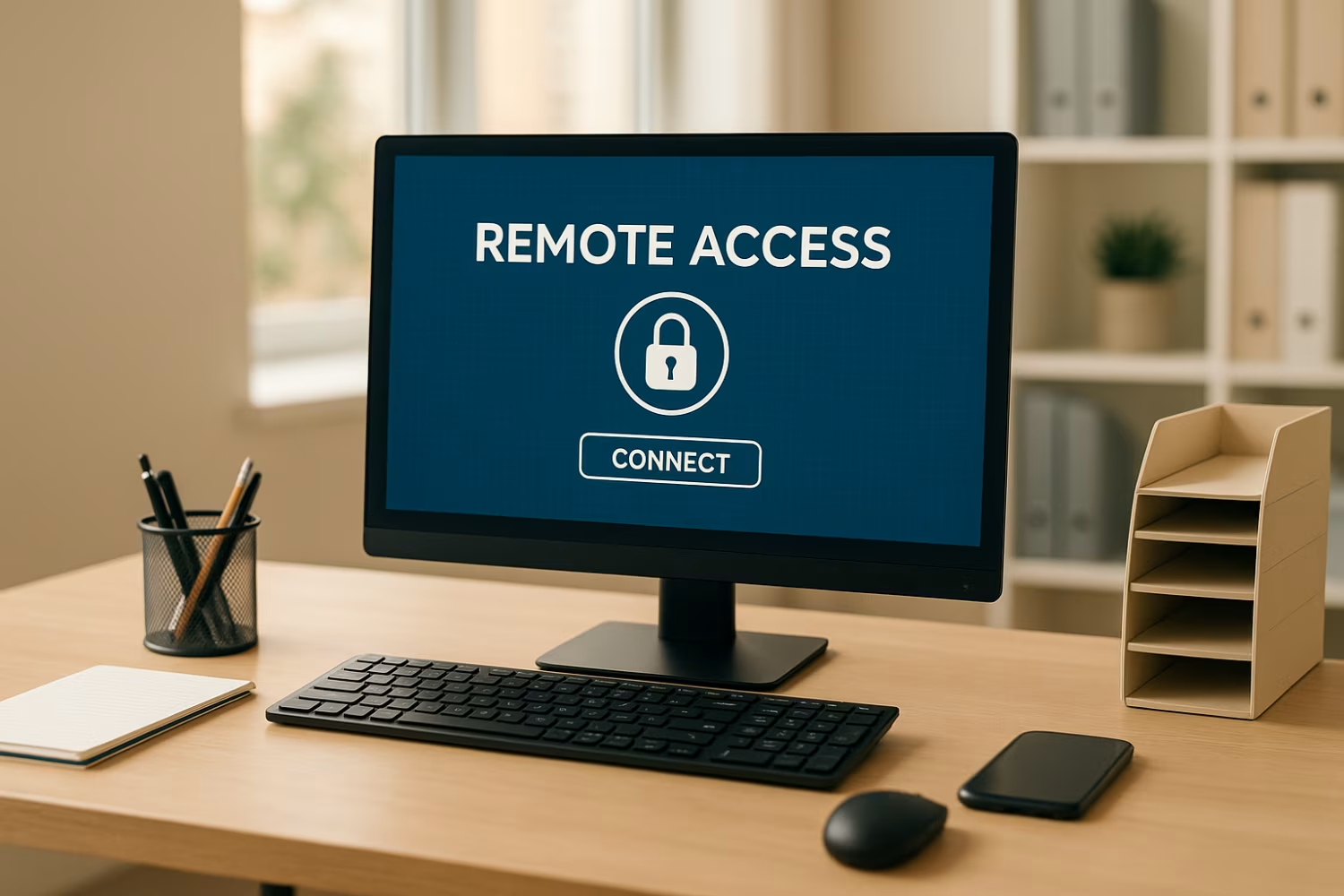
How to implement secure remote access in your business
Start by assessing your current setup. Identify who needs access, what systems they use, and where the risks are. From there, define your security policies and choose tools that match your needs.
Roll out changes in phases—start with MFA and endpoint protection, then move to ZTNA or IAM platforms. Train your team on new processes and monitor usage closely. Regular reviews will help you stay ahead of new threats and technology changes.
VPN best practices for better protection
Following best practices can make your VPN setup more secure and reliable:
- Use strong encryption and up-to-date protocols
- Require MFA for all VPN connections
- Limit VPN access by user role and device type
- Monitor VPN usage for unusual patterns
- Combine VPNs with other tools like ZTNA or EDR
- Educate users on safe remote access habits
These steps help reduce risk while keeping your systems accessible to the right people.

How soma technology group can help with secure remote access
Are you a business with 20 to 1000 employees looking for a secure remote access solution that actually works? As your team grows, so does the need for reliable systems that keep your data safe without slowing down productivity.
At Soma technology group, we help businesses implement secure, scalable remote access systems tailored to their needs. Whether you’re working from home, managing hybrid teams, or expanding your operations, our team can guide you through the right tools, strategies, and support to keep your business secure.
Frequently asked questions
How can we start securing remote access for hybrid teams?
Start by identifying which systems your remote and hybrid teams need to access. Then, apply access controls that limit entry based on user roles and device types. Use authentication tools like MFA to verify users before allowing access.
It’s also important to monitor each endpoint used for remote work. Devices should follow your security policies, including encryption and regular updates. This reduces the risk of unauthorised access to your corporate network.
What’s the difference between VPN and Zero Trust Network Access?
A VPN creates a secure tunnel into your private network, but it often gives broad access once connected. Zero Trust Network Access (ZTNA) only allows access to specific apps or data, verifying each request individually.
ZTNA reduces the attack surface by not trusting any user or device by default. It also improves visibility and control, especially in remote work environments where traditional VPNs fall short.
Why is multi-factor authentication critical for remote access?
Authentication using just a password is no longer safe. Multi-factor authentication (MFA) adds another layer, like a code sent to a mobile device, making it much harder for attackers to break in.
This is especially important when users access systems from outside the office. MFA helps protect against stolen credentials and supports secure remote access across all platforms.
How does single sign-on improve remote access security?
Single sign-on (SSO) allows users to log in once and access multiple systems. This reduces the number of passwords they need to remember and lowers the risk of password reuse.
SSO also helps with sign-on tracking and access management. It gives IT teams better visibility and control over who is accessing what, and when.
What role does endpoint security play in remote access?
Endpoints like laptops and mobile devices are often the weakest link. If they’re not secure, attackers can use them to get into your systems. That’s why endpoint protection is essential.
Use tools that monitor devices in real time and enforce policies like encryption and automatic updates. This keeps your remote access solution strong and reliable.
How can we maintain visibility over remote access activity?
Use tools that offer real-time monitoring and reporting. These help you see who is accessing your systems, from where, and what they’re doing. It’s key for detecting unusual behaviour early.
Combine this with extended detection and response (XDR) systems to get a full picture of your access environment. This makes it easier to spot threats and respond quickly.
.svg)
.webp)
